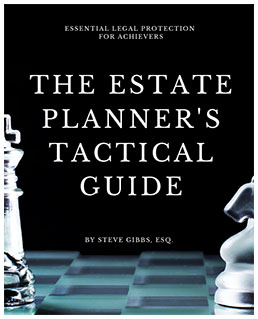The Estate Planning With Living Trusts Basics Everyone Should Know
When most people hear “estate planning,” they picture wealthy families in mansions dividing up vast fortunes. But here’s the truth: estate planning is for everyone who cares about what happens to their stuff after they’re gone.
Let me break this down simply: your “estate” is just your stuff. Your house, bank accounts, retirement funds, cars, family heirlooms – all the things you’ve worked hard to acquire during your life. Estate planning is simply making sure those things go where you want them to go, with minimal headaches for your loved ones.
A Cautionary Tale: The Johnson Family Probate Saga
When 58-year-old software engineer Mark Johnson died suddenly in a car accident, his family discovered his $1.8 million estate—consisting of a primary home, brokerage account, and cryptocurrency holdings—relied solely on a 15-year-old last will and testament. What followed serves as a stark reminder of why proper estate planning matters.
The Painful Probate Process
Mark’s estate took 14 months to settle, with his family facing one obstacle after another:
- Months 1-3: The court-appointed executor struggled to locate cryptocurrency keys, causing significant delays in the initial inventory
- Months 4-6: Disputes over home valuation required separate appraisals, costing $4,200 in additional fees
- Months 7-9: State tax authorities placed a lien on the estate during the creditor notification period
By the time everything was settled, the financial toll was devastating:
- Court fees: $6,500
- Attorney fees: $28,000
- Appraisal and accounting: $12,300
- Lost cryptocurrency assets: 2.4 BTC (valued at $98,000) from inaccessible wallets
Family Relationships Destroyed
Perhaps most tragic was the impact on the Johnson family itself. Mark’s sister (who served as executor) and brother became locked in bitter disputes over:
- Who should pay maintenance costs for the vacant home
- How to allocate tax liability for capital gains
- How to interpret ambiguous will terms about “digital property”
As Mark’s daughter Emily later shared, “I spent hours arguing with my uncle about whether Dad’s Coinbase account counted as ‘property’ while watching Bitcoin values fluctuate wildly. We used to have Sunday dinners. Now we communicate through lawyers.”
Asset Complications Nobody Anticipated
Each category of assets presented unique challenges:
- Real Estate: The county required physical inspection before transfer could occur
- Brokerage Account: Funds were frozen with a 6-month hold during the creditor claims period
- Cryptocurrency: Each exchange required separate probate documents and death certificate copies for each type of digital currency
The Living Trust Alternative
Had Mark created a revocable living trust instead of relying on his outdated will, his family could have:
- Bypassed probate entirely through successor trustee provisions
- Had clear instructions for handling digital assets
- Established specific cryptocurrency management protocols
- Saved approximately $46,800 in direct costs plus $112,000 in lost asset value
Most importantly, his family relationships might have remained intact during an already difficult time.
As Mark’s story illustrates, the problem with relying solely on a will comes down to one fundamental issue: when you’re gone, your signature—your ability to control what happens to your assets—is gone too. This signature problem is at the heart of why many families end up in costly, time-consuming probate proceedings.
It All Comes Down to Your Signature
Here’s the most important concept in estate planning that most people don’t realize: everything revolves around signatures.
While you’re alive, you can do whatever you want with your belongings because you can sign your name on documents.
Want to sell your house? Sign the deed.
Need to withdraw money? Sign the check.
Your signature is your power to control your assets.
But what happens when you pass away? Your signature dies with you.
And this creates a fundamental problem: if you’re still listed on the title of your house or as the owner of your accounts, you can’t sign them over to anyone else after you’re gone.
This is where the courts step in, through a process called probate – and this is what most people want to avoid.
Your Three Estate Planning Options
When it comes to estate planning, you essentially have three options:
| Estate Planning Option | Privacy | Court Involvement | Timeline | Typical Cost | Flexibility |
|---|---|---|---|---|---|
| Will Only | None - Public Record | Requires Probate | 6-24 months | 3-10% of estate value | Limited changes after death |
| Revocable Living Trust | Complete Privacy | No Court Required | 1-6 months | Fraction of probate costs | Highly adaptable |
| No Plan (Intestate) | None - Public Record | Extensive Court Control | 9-24+ months | Highest costs | No control |
Option 1: Do Nothing
Believe it or not, doing nothing is a legitimate option for some people. If you have very few assets, no real estate, and have already named beneficiaries on your financial accounts, you might not need formal estate planning.
For example, if you’re a widow who’s moved in with your children, has one simple bank account with payable-on-death beneficiaries, and few personal possessions, you might be fine with minimal planning.
Similarly, if you’re young, have no children, no real estate, and minimal assets, you might reasonably decide to postpone estate planning for now.
However, even in these situations, having powers of attorney for healthcare and finances is still important. These documents ensure someone can make decisions for you if you become incapacitated.
Option 2: Create a Will
A last will and testament is what most people think of when they consider estate planning.
A Will is a document that does three main things:
- Names your executor (the person who’ll manage your affairs)
- Designates your beneficiaries (who gets your stuff)
- Names guardians for minor children (if applicable)
However, here’s what many people don’t realize: having a will doesn’t avoid probate.
Remember that signature problem?
A will takes effect only after you die, and at that point, you can’t sign your assets over to your beneficiaries.
Your will simply provides instructions to the probate court about how you want your assets distributed.
According to AARP, the average probate process takes 9 months to 2 years and costs between 3-8% of your estate’s value. On a million-dollar estate (which is easier to reach than you might think when you add up your home, savings, and retirement accounts), that’s $30,000-$80,000 that could have gone to your loved ones.
Option 3: Create a Revocable Living Trust
A revocable living trust offers the most comprehensive solution for most people. Despite what many believe, trusts aren’t just for the ultra-wealthy – they’re practical tools for anyone who wants to avoid probate and maintain control over their assets.
When you set up a trust, you’re still doing the same basic planning as with a will – naming who controls your assets, who benefits from them, and who cares for your children. The difference is in how a living trust works.
THE ULTIMATE FREE DOWNLOAD
The Estate Planners Tactical Guide
Essential Legal Protection for Achievers

How a Living Trust Works
A living trust is essentially an agreement that involves several parties:
- The grantor/trustmaker (you, who creates the trust)
- The trustee (who manages the trust – typically you while you’re alive)
- The successor trustee (who takes over after you pass away)
- The beneficiaries (who receive the assets)
What makes a living trust special is that once it’s signed and notarized, it becomes a “living entity.”
This means two critical things:
- It can own property and assets – Your house, bank accounts, investments, and other assets can be titled in the name of your trust.
- It doesn’t die when you do – When you pass away, the trust continues to exist, and your successor trustee can immediately take control of the trust assets without court involvement.
This elegantly solves the signature problem. Since your assets are already owned by the trust (not you personally), there’s no need for probate when you pass away. Your successor trustee simply takes over managing those assets according to your instructions set forth in your living trust.
Revocable vs. Irrevocable: What’s the Difference?
The “revocable” part of a revocable living trust means you can change or cancel it anytime during your life. This flexibility is why they’re the most common type of trust for most people.
An irrevocable trust, on the other hand, generally can’t be changed after it’s created. These are typically used for specific situations involving liability protection, Medicaid planning, specialized tax planning, or creating Irrevocable Life Insurance Trusts (ILITs).
For most people, a revocable living trust offers the ideal balance of protection and flexibility.
Benefits of a Living Trust Beyond Avoiding Probate
While avoiding probate is the primary reason many people create living trusts, they offer several other significant benefits:
1. Managing Distributions to Beneficiaries
A trust allows you to control not just who gets your assets, but how and when they receive them. For example, if you have a child who struggles with financial management, you can structure your trust to distribute their inheritance in installments rather than as a lump sum.
You might specify that your children receive portions of their inheritance at ages 25, 30, and 35, rather than all at once. Or you could designate funds specifically for education, purchasing a home, or starting a business.
2. Protection During Incapacity
If you become ill or incapacitated, your successor trustee can step in to manage your financial affairs without court intervention. This avoids the need for a court-appointed conservatorship, which can be costly, time-consuming, and public.
3. Care for Minor Children or Dependents
For parents of minor children, a trust allows you to set aside funds for their care, education, and support, managed by the trustee you choose. This provides much more control than simply leaving assets to minors in a will.
4. Planning for Special Needs Beneficiaries
If you have a beneficiary with special needs who relies on government assistance, a properly structured trust can provide for their needs without disqualifying them from benefits like SSI or Medicaid.
5. Privacy
Unlike probate, which is a public process, a trust administration happens privately. The terms of your trust and the details of your assets remain confidential, shared only with your trustees and beneficiaries.
6. Business Succession Planning
If you own a business, a trust can be an essential part of your business succession plan, ensuring a smooth transition of ownership and management after your passing.
Common Mistakes to Avoid with Living Trusts
Failing to Fund Your Trust
The biggest mistake people make is creating a trust but never transferring their assets into it. This is called “funding” your trust, and it’s absolutely critical. An unfunded trust is like having an empty safe – it doesn’t protect anything.
To fund your trust, you need to:
- Change the titles on your real estate
- Update your bank and investment accounts
- Review and possibly update beneficiary designations
If your assets aren’t properly titled in the name of your trust, they’ll still have to go through probate, defeating the primary purpose of having a trust in the first place.
Trying to DIY Your Estate Plan
While do-it-yourself estate planning documents might seem attractive because of their low cost, they often create more problems than they solve. Estate planning involves complex legal, tax, and personal considerations that generic forms can’t adequately address.
Every family situation is unique, and proper planning requires personalized guidance. The money saved upfront with DIY solutions is often dwarfed by the costs your loved ones will face sorting out problems after you’re gone.
Forgetting to Update Your Trust
Life changes – marriages, divorces, births, deaths, relocations, acquisition of significant assets – should trigger a review of your estate plan. Many people create a trust and then forget about it for decades, during which time their circumstances and wishes may have changed dramatically.
Who Should Consider a Living Trust?
A living trust isn’t necessary for everyone, but it’s worth considering if you:
- Own real estate
- Have minor children or dependents
- Want to avoid probate
- Desire privacy for your estate
- Want to control how and when beneficiaries receive assets
- Own a business
- Have a blended family
- Want to plan for your own potential incapacity
The Process of Creating a Living Trust
Creating a living trust involves several steps:
- Planning – Identifying your goals, assets, and beneficiaries
- Drafting – Creating the trust document itself
- Executing – Signing the document with proper witnesses and notarization
- Funding – Transferring assets into the trust
- Reviewing – Periodically updating the trust as circumstances change
The process doesn’t have to be overwhelming or excessively expensive. With the right guidance, creating a comprehensive estate plan can be straightforward and affordable.
Powers of Attorney: Essential Companions to Your Trust
Durable POA
Even with a trust, you still need durable powers of attorney for healthcare and finances. These documents appoint someone to make decisions on your behalf if you become incapacitated.
Healthcare POA
Your healthcare power of attorney (sometimes called an advance directive) covers medical decisions, while your financial power of attorney covers financial matters outside your trust.
Together with your trust, these documents provide comprehensive protection for you and your loved ones.
Taking the Next Step in Your Estate Planning Journey
Estate planning isn’t just for the wealthy or the elderly – it’s for anyone who wants to protect what they’ve worked for and the people they care about. A properly structured living trust can save your loved ones time, money, and stress during an already difficult time.
The key is getting started. Many people procrastinate on estate planning because it involves thinking about difficult topics. But having these documents in place provides tremendous peace of mind, knowing you’ve taken care of your loved ones’ future.
If you’re ready to learn more about how a living trust might fit into your personal situation, we offer educational resources and personalized guidance to help you create a plan that protects your nest egg and your family’s future.






3 comments
Brian Stidham
My parents created a joint revocable living trust. One of the provisions of their trust states, “Both spouses intended no gift in creating this instrument (trust agreement).” The agreement also states, “no such taxes shall be apportioned or charged to property that qualifies for the marital deduction. The trustee shall seek recovery of taxes from qualified terminable interest includable in the surviving grantor’s estate.”
I am trying to understand the purpose of the no-gift provision placed in this trust by both spouses and what it means. Can you provide clarity before proceeding forward with help.
SJG
Hello Brian, I recommend that you seek help from a reputable estate attorney in your state of residency as these questions are very state specific. Our focus is EP for educational purposes only as a compliment to your permanent life insurance planning.
Best, Steve Gibbs for I&E
employment law lawyers
I was able to find good information from your blog articles.